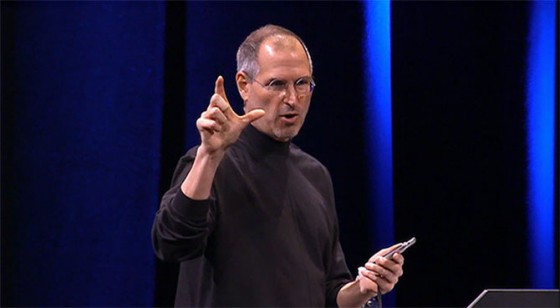Bloomberg Businessweek has an interesting story up this morning which takes a look at Tim Cook’s first year as Apple’s CEO. The article also offers a few previously unknown tidbits related to late CEO Steve Jobs’s role in the iOS 6 Maps project (originally an afterthought during the iPhone development). It also touches upon the retirement of hardware boss Bob Mansfield and his $2 million a month advisory agreement with Cook, Apple moving away from Intel, the iPad mini later this month and more…
According to the article, Jobs’s departure and the arrival of thousands of new employees and managers won’t dilute the culture because “the company is happier and even somewhat more transparent than it was during Jobs’s tenure”.
What this means is the following:
There are fewer frantic calls at midnight, and there’s less implicit pressure on engineers to cut short or cancel vacations in the heat of product development cycles.
In case you had any doubt, Cook & Co. know what they’re doing even if of course “no one would say Apple is better off without Steve Jobs”.
Two people familiar with the iPhone 5 development told the publication that it was “the last model to receive detailed input from Jobs”. Another thing Jobs considered was pulling Google search from the iPhone, “but figured that customers would reject that move”.
On Jobs’s role in the Maps project:
Apple insiders say Jobs himself initiated the mapping project, putting mobile software chief Forstall in charge, and he installed a secret team on the third floor of Building 2 on Apple’s campus to replace Google Maps on the iPhone.
Some people are calling for the resignation of Forstall, Apple’s youngest SVP pictured below, over the Maps fiasco.
On the iPad mini:
It’s likely the iPad Mini, to be introduced later this month, will run on an Apple-designed processor as well.
On Apple moving away from Intel:
Apple has also deliberated over moving away from Intel chips in the Macintosh, say two people familiar with these discussions. Such a shift would be difficult and isn’t imminent, though it would allow Apple to further distinguish its laptops and desktops from competitors that run Intel’s chips and Microsoft’s Windows software.
Japanese blog Macotakara reported in May 2011 that Apple was toying with an A5-powered MacBook Air with Thunderbolt I/O.
By the way, remember this?
http://www.youtube.com/watch?v=prImvDVHzTM
Health issues didn’t soften Jobs when it came to Apple’s thermonuclear war on Android.
At the time of his death, Jobs had come to loathe Google, which he felt was copying features of the iPhone while withholding a key feature of Google Maps that allows smartphones to dictate turn-by-turn directions aloud.
Consumer Reports concluded that turn-by-turn navigation in Apple Maps is, for the most part, on par with Google’s.
As for Mansfield, seen below, several senior engineers on his team reportedly “vociferously complained to Cook” about Mansfield’s replacement Dan Riccio, who they felt was “unprepared for the magnitude of the role”.
Dan Riccio can be seen in Apple’s promotional clips detailing the iPhone 5 and third-generation iPad so it’s not like the company wasn’t grooming the executive for the role.
The article also reveals that Cook offered Mansfield $2 million a month to stay on at Apple as an adviser and help manage the hardware engineering team.
Two million bucks a month?
Wow, just wow…


